Celo Review: The "Mobile First" Blockchain Platform
One of the blockchain projects that’s been working on making cryptocurrencies available to everyone by simplifying the payment process is Celo. Rather than using complex, long strings of letters and numbers as blockchain addresses, users of Celo are able to send and receive cryptocurrencies using their mobile phone number.
The team at Celo made the decision to use the mobile phone because it is so ubiquitous and understood. While some areas of the world haven’t received the cabling for internet or even for landline phones in 2020, the people that live in these areas do have mobile phones in many cases.

To make use of mobile phones the Celo protocol was created to be lightweight and fast. And with over 6 billion mobile devices globally it was also made to be scalable. Most importantly from a user experience is that Celo is easy to use.
Celo Simplifies Blockchain Transactions
The Celo team simplified the user experience by getting rid of the clunky public keys on the user side and replaced them with the mobile phone numbers that most of us are used to. They are also far easier to remember and to type into a form as an address.
Using mobile phone numbers as addresses also allowed the team to develop a blockchain with far lower resource usage when compared with many modern blockchain solutions. This low resource design is key for increasing usage in areas where resources are scarce.

One final addition to the Celo platform is the decentralized algorithm EigenTrust. This is an algorithm that measures reputation, similar to the way a credit score measures our financial reputation. With EigenTrust as part of the system an account’s reputation score is defined by the number of other accounts who trust it weighted by their reputation scores.
EigenTrust was developed by Sep Kamvar, one of the founders of Celo, in 2002 for Google and it was previously used as an important component of the Google PageRank algorithm.
Using the Celo Platform
While the Celo app is the preferred way to send Celo Dollars (cUSD), the platform’s stable coin, it is not needed. Users can send cUSD via WhatsApp if they like, however in order to receive the cUSD the recipient will need to download and install the Celo wallet (currently available for Android only).
When the wallet is created the mobile number is linked to a wallet address and a cryptographic hash of the phone number is stored on the blockchain. It’s really a simple process, and you can even try it out for yourself using the Celo developers wallet and the Alfajores Testnet.
We tried it out to see if it really worked as advertised by the Celo team and found that it truly is a simplified way to interact with a blockchain and cryptocurrency. After installing the wallet and linking a mobile number the app sends a code via SMS to the mobile number. The user inputs that code into the wallet app and the system begins to synch the wallet and the mobile device.
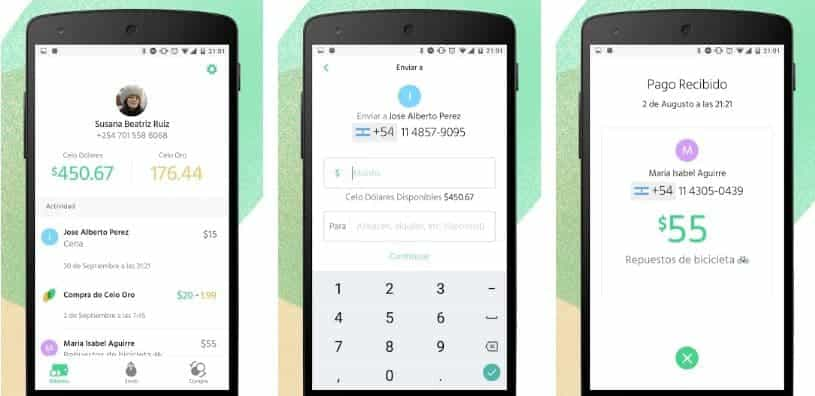
The Celo team has also stated that multiple phone numbers can be associated with the same Celo address, which can be useful when changing phone numbers. Numbers can be added or removed from a wallet address at any time.
There is a small fee that’s charged to the account to verify the phone number, but this is not a big deal with the testnet since the wallet comes prefunded with 10 cUSD. And if you continue using the wallet you can always top it up from the Celo faucet. Each request to the faucet delivers 10 cUSD and 5 CELO.
We will discuss cUSD and CELO in depth later in the article.
The whole process is so simple that during a Reddit AMA one of the early backers referred to the Celo project as “WhatsApp for money.”
The CELO Team
The Celo team consists of dozens of individuals from all over the world and from multiple disciplines that include software development, blockchain engineering, marketing, business, finance, and others. It’s this broad, deep experience base that has recommended Celo as one of the top projects to watch in the blockchain space.
The three co-founders of Celo are Sep Kamvar, Rene Reinsberg, and Marek Olszewski. The three share the responsibility of running the project through cLabs.

Rene Reinsberg is in charge of business. Most recently, Rene was an EIR at General Catalyst Partners. Previously, he was GoDaddy's Vice President of Emerging Products. He co-founded venture-backed Locu and served as CEO until Locu's acquisition by GoDaddy in August 2013.
Rene started his career in global capital markets at Morgan Stanley and also worked at McKinsey, the World Bank and TechnoServe. He earned a diploma in finance from Germany's WHU and a MBA from MIT Sloan. Rene is an active advisor and investor in 50+ companies.
Sep Kamvar is the inventor of the digital reputation system called EigenTrust which was once used by Google as part of their Pagerank algorithm. Before joining Celo he was a partner in the Wildflower School and an Associate Professor at Massachusetts Institute of Technology. In earlier years he was a consulting professor for Stanford University while also working as Engineering Lead for Personalization at Google.
Marek Olszewski is an avid computer engineer, with a PhD in Computer Science from Massachusetts Institute of Technology. He also worked at Microsoft Research, Google and Sun Labs prior to creating his machine intelligence startup Locu. After that was acquired by GoDaddy he served as VP of Engineering at GoDaddy until moving on to Celo.
In addition to the official staff at cLabs and Celo there are also a group of 50 ambassadors from 16 countries around the globe who maintain the Celo community, write blog posts, manage local social media channels, run local events, and connect with local Celo partners.
How Does Celo Work?
While Celo appears very simple for the users, on the backend it is just as technically sound as any competing blockchain project. Built using the Go implementation of Ethereum, Celo uses a Proof-of-Stake consensus algorithm. The founders chose PoS for its light resource usage. The system uses both validators and nodes to verify transactions and to ensure the network remains secure.
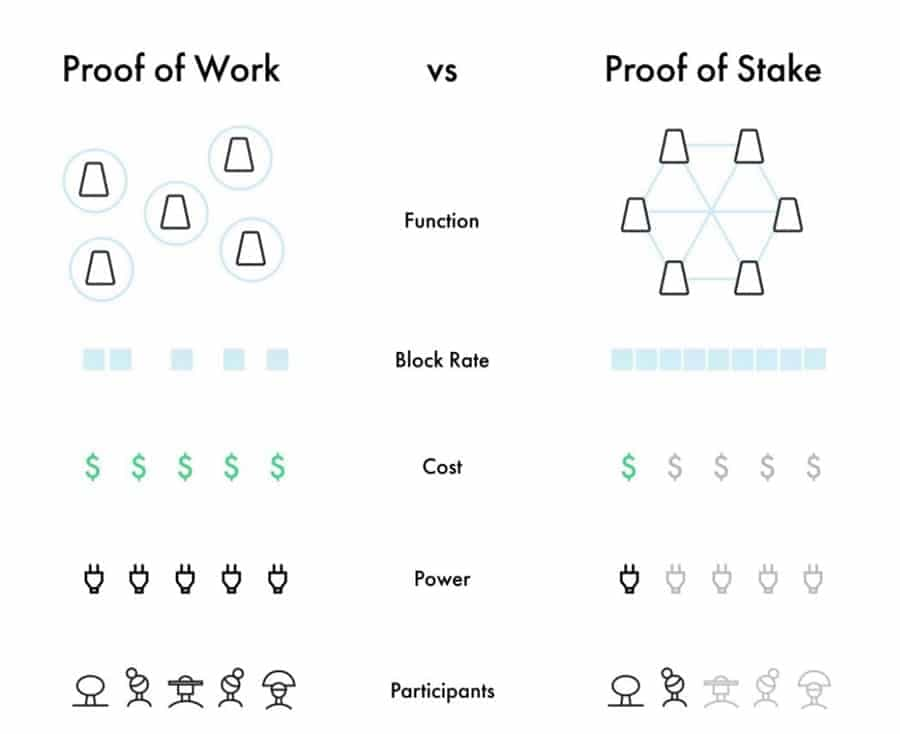
Celo is currently using a Byzantine Fault Tolerant consensus algorithm where a defined set of validator nodes are used to reach agreement on the validity of transactions posted to the network. This consensus method can reach agreement on the validity of transactions even when one-third of the nodes are malicious, faulty, or offline.
There are many other successful blockchain projects using PoS consensus and these include Cosmos, Tezos, and Algorand. And in the near future Ethereum will also transition to become a Proof-of-Stake blockchain.
Becoming a Celo Validator
One downside to the validator network is the cost of running a validator node, currently estimated to be over $15,000. Still, that’s quite inexpensive when compared with Cosmos for example, where it requires 10,000 ATOM (over $50,000) to become a validator.
Even though the cost is prohibitive for many, Celo is looking for ways to make it more affordable to run a validator. Currently that includes a multi-tiered system of validators, nodes, and light clients. The Celo community has also proposed increasing the number of validators into the millions, but currently there are a maximum of 100 validators on the network.
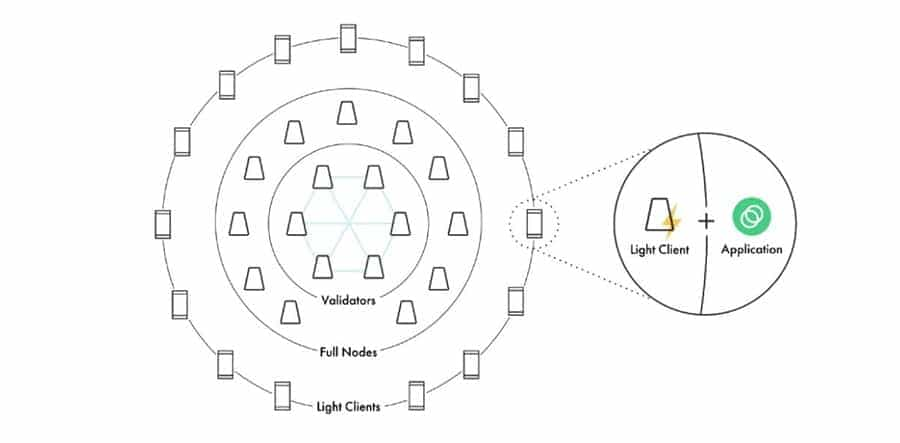
Note that validators are the most powerful components in the network. They are responsible for protocol changes, providing security audits, and supplying the hardware and software necessary to keep the network running.
Naturally the validators are compensated for the role they perform in the network. In addition to being compensated they also hold governance properties that steer the network and protocol in the best direction as deemed by the community.
Any validators that don’t act in the best interests of the network can be penalized economically. Plus, since the validators are elected by Celo holders, any validator that doesn’t act in the best interests of the community can be replaced by the votes of the community.
Validators currently earn nearly 30% APY on their staked CELO tokens. For those who can’t or won’t run a validator there is an option to stake coins by delegating to the validators. In this case the APY on staked coins is just over 10%. Unfortunately it is still a fairly complex operation even to delegate since it needs to be done through a command line interface.
Running a Celo Node
Celo includes transaction fees, like most other blockchain networks. In the case of Celo these fees are for transactions that get sent to the full nodes. Because the network becomes more efficient when there are more nodes, there needs to be a way to incentivize folks to run a full node. The good news is there are no costs for running a node other than the electricity used to run the machine the node is installed on.
Celo nodes benefit from “gateway fees” in the network. The nodes are also considered gateways to the network and they forward transactions and requests from the light nodes to the validators. In a network like Celo, where most of the nodes will be light or ultralight mobile wallet nodes, it is important to have a robust level of full nodes in place to service the light nodes.
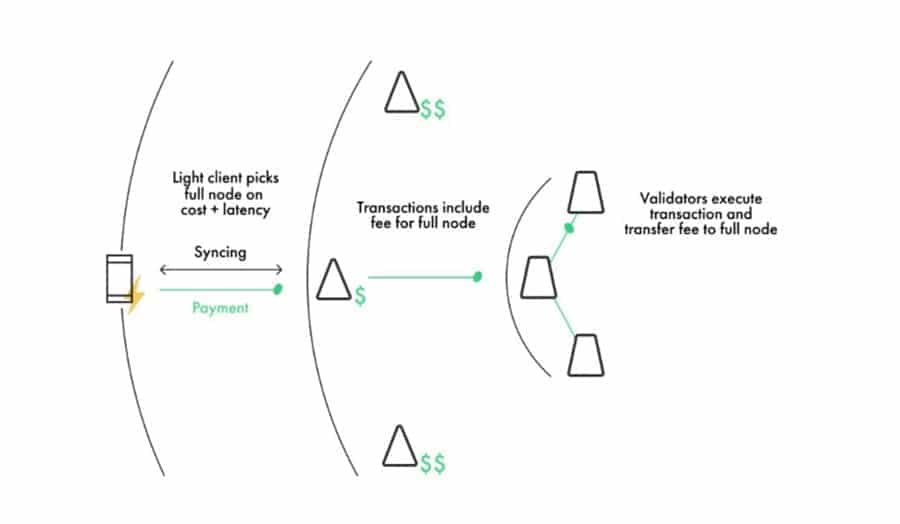
When a light node has a transaction they attach the small gateway fee to it and when it is passed along to the full node this gateway fee is the incentive for the full node to pass the transaction to the validators.
Light clients are able to choose the specific full node they wish to service them and this can be based on location, cost, reliability and other factors to optimize cost and quality of service.
What Are the Celo Assets?
There are currently two native crypto assets that are used in the Celo network. These are Celo Dollars (cUSD) and Celo (CELO).

There is a third asset used at Coinbase and a limited number of other outlets that is called Celo Gold and uses the ticker cGLD. These are ERC-20 tokens that were sold in Dutch auction on Coinlist on May 12, 2020. Outlets such as Coinbase also received cGLD tokens at the time as a payment for their early investments into Celo. The cGLD tokens were unlocked when the Celo mainnet launched and can be exchanged for CELO or for cUSD.
cUSD
The Celo Dollars or cUSD are the Celo stablecoin that is meant to enable stable transfer of value between users. It is backed by reserves of other digital assets like Bitcoin and Ethereum and is pegged to the price of the U.S. dollar. In the future the team has said they will expand the stablecoin offerings to the cEUR and cGBP among others.
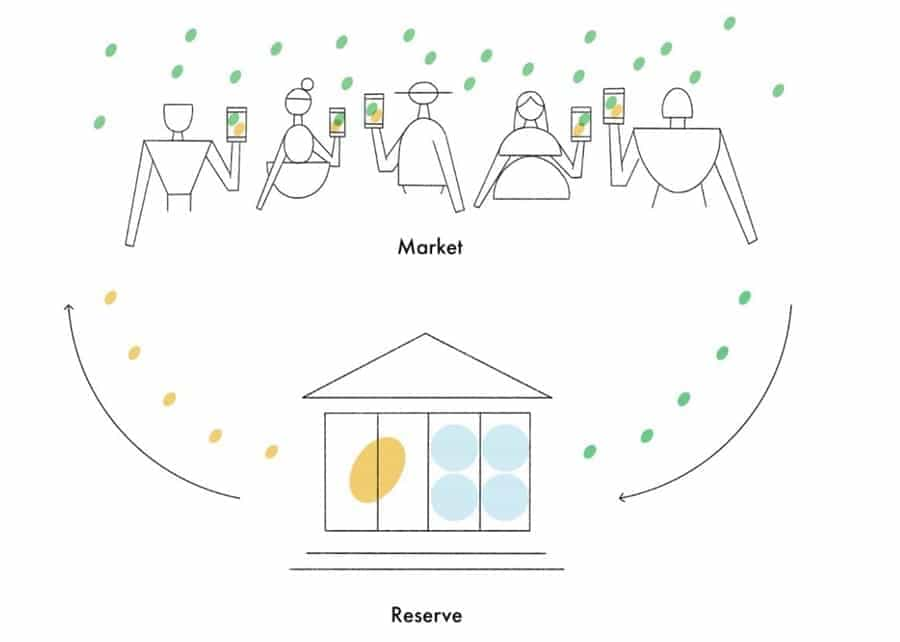
The protocol that provides the cUSD with stability is a hybrid seigniorage and crypto-collateral model. That means the collateral backing the cUSD is a mix of CELO and other cryptocurrencies. These are used to adjust the supply of cUSD and maintain the peg.
To maintain a high collateralization ration, which is crucial for the stability of the system, there is a fee levied on transactions that gets added to the reserve. It is also possible in the future that some portion of each block reward will get added to the reserve if necessary to maintain stability.
As with other stablecoins, arbitrageurs are a key component of keeping the peg. So, when the price of cUSD is above $1 arbitrageurs are expected to purchase CELO and exchange it for cUSD, then sell the cUSD to collect the profit. This selling will push the market price of cUSD back down to $1.
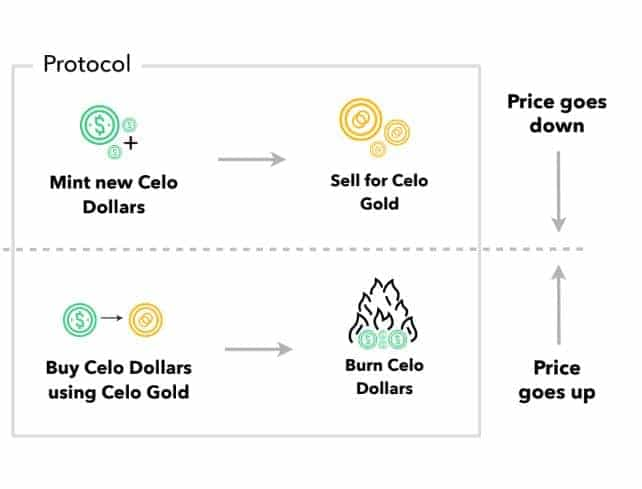
Similarly, if the price of cUSD is under $1 arbitrageurs will buy the token and then exchange it for CELO to profit from the difference. The cUSD buying will push the price back up to $1.
Users can create cUSD by sending $1 worth of CELO/cGLD to the Celo Foundation reserve. They can also destroy cUSD by converting it back into CELO.
CELO
Celo Dollars can be minted or burned at any time to maintain stability and the peg to the U.S. dollar. The same is not true of the CELO, which has a fixed supply. It is through this fixed supply cryptocurrency that Celo maintains price stability, as well as most of the governance operations of the blockchain.
CELO tokens have the following utilities:
- Participate in governance decisions in the platform.
- Support the overcollateralized reserve that backs the stable value currencies in the platform (initially Celo Dollars) and price stability.
- Funding to support applications in the ecosystem.
- Incentives for validators secure and operate the network.
Users holding enough CELO (and cGLD) are able to join the network as validators, and they are able to propose and vote on protocol changes. Any proposals also require a small amount of CELO be sent to a smart contract, where they are locked in. If the proposal is ultimately approved these funds are returned after a waiting period of three days has elapsed.
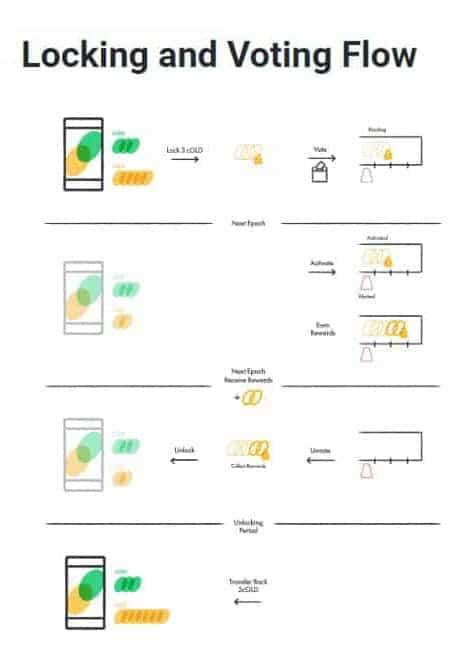
Voting on protocol changes is also done by locking up CELO in the same smart contract. Again, the voters are able to recall their CELO after a waiting period of three days has elapsed. This waiting period is to discourage attacks on the network.
The Alliance for Prosperity
The overriding objective of Celo is driven by the mission and goals of the Alliance of Prosperity. Celo doesn’t just want to be the first mobile-friendly, highly-secured blockchain network. It wants to accomplish this in order to expand on its mission to improve financial inclusion and prosperity for citizens in all parts of the world who traditionally have been excluded from the financial system. This is why the mobile application is so important to Celo.

The reason why mobile phones were chosen is simple. In many of the poorest regions of the world the mobile phone has unintentionally become a “leapfrog” technology. For example, even though many of these areas have never had fixed line telephones, or dial-up internet, they are now saturated by cell phones and other mobile devices.
In addition, the amount of value passed through mobile phones is growing each year, even without digital assets being accounted for.
Not just that, but the amount of value now being passed using mobile devices is growing every year. In 2018 alone there were an estimated $136 billion in cash transactions conducted via mobile money agents. It’s a telling statistic that’s backed up by the fact that the number of mobile money agents exceeds that of the commercial banking infrastructure.
The Celo Foundation is continuing this transition by creating the Alliance for Prosperity. This is a far-flung and wide reaching group of individuals, projects, companies, foundations, investment funds, service providers, and other entities – all of whom are committed to improving the financial prosperity of those in the poorest regions of the world.
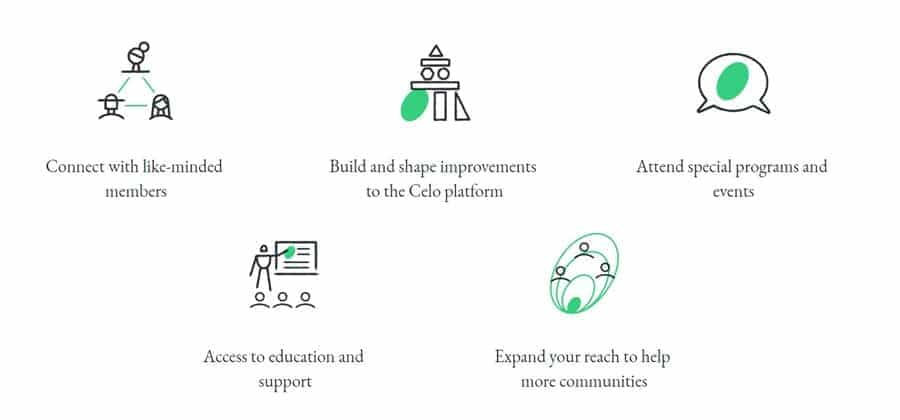
These improvements can come in many forms and have been defined by the Celo Foundation under the following niches: Accept, Acquire, Build, Earn, Educate, Give, Grow, Lend, Preserve, Send, Save, and Secure.
The Alliance has been growing exponentially, and has even been compared with the Libra project launched by Facebook because it has attracted a similar audience of users and backers.
Celo is accepted as the first major blockchain project that has made social impact the core of its mission.
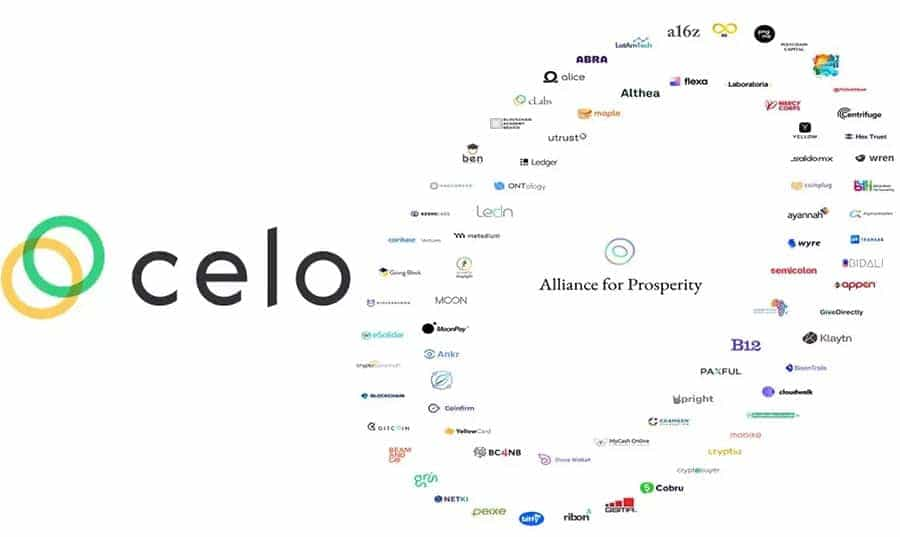
In addition to the impact being made directly on poor individuals and communities, the companies within the Alliance are also empowered to work with one another to create even greater prosperity for the citizens being helped by the Alliance.
CELO Price Performance
With the main net for CELO launching on May 18, 2020 the CELO token hasn’t been trading for very long. And aside from some fireworks in late August and early September the token has remained around the same level.
Unfortunately for early investors that level is between $1.50 and $1.70, which is far below the average price of $5.02 that was paid for cGLD during the May 2020 Dutch auction on Coinlist. In fact, just a week after that Dutch auction CELO started trading at just $0.83 and the highest level it has reached is $4.73 on September 4, 2020.
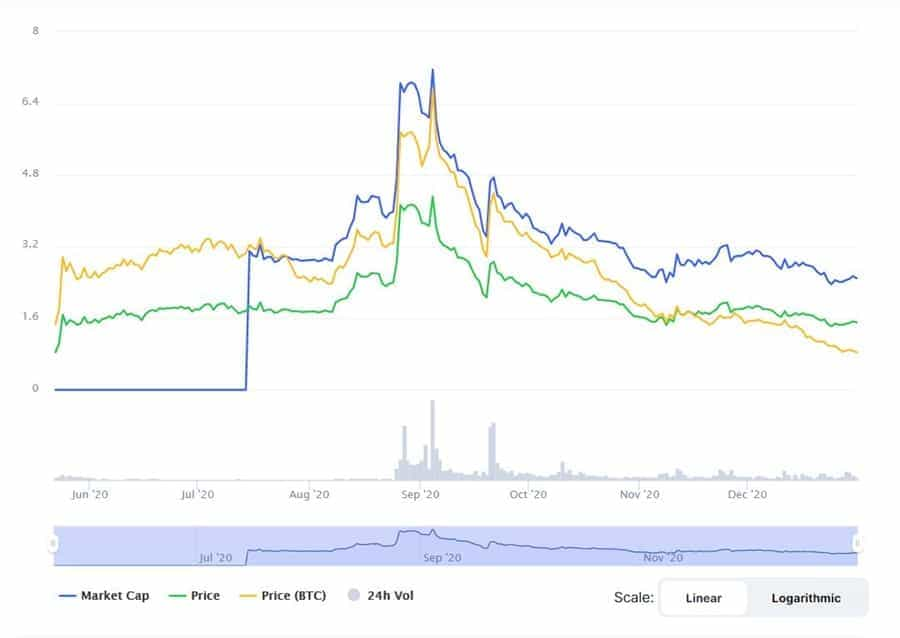
As 2021 is beginning most of the trading volume in the token is on Coinbase Pro. In addition there is a small amount of trading on Bilaxy and on Bittrex.
For storage Celo has released a wallet, however it is currently only available for Android devices. There is also a third-party Chrome extension, however it has no reviews and very few users, so install it at your own risk.
Conclusion
While Celo hasn’t gained mainstream acceptance yet, it has gained massive adoption in the cryptocurrency community, with nearly 100 companies sponsoring or supporting the project in some way. It’s easy to see that Celo is an extremely ambitious project, considering its mission is to create prosperity for everyone.
Understand that the project is in its very early stages however. While the main net was launched in May 2020, as of December 2020 it doesn’t appear as if adoption is happening very rapidly.
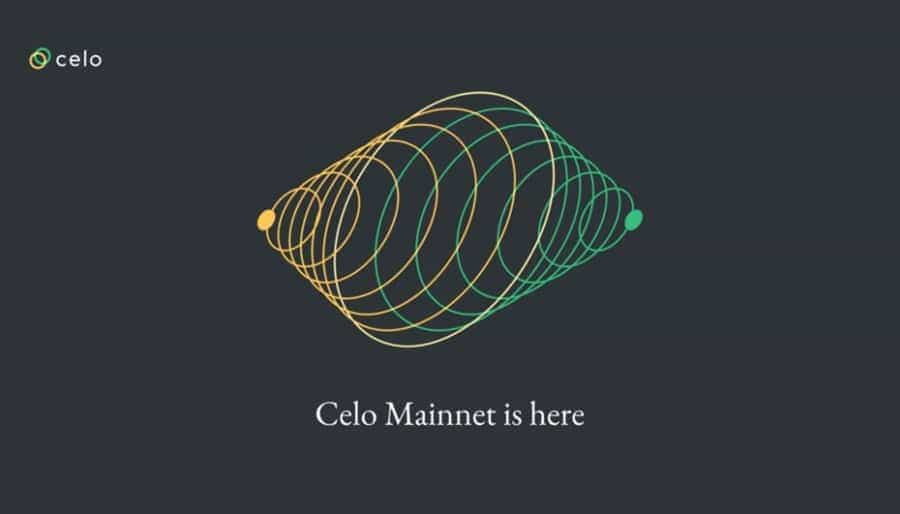
Yet the community behind Celo is large, diverse, and passionate. And by using the mobile phone in its design it has found one way to make cryptocurrencies more approachable and understandable for the average person. This could be just the thing to drive massive adoption in the coming decade.
This type of adoption is going to be necessary to see growth in the CELO token, which has been sadly resistant to the December rally in Bitcoin and other large cryptocurrencies.
Disclaimer: These are the writer’s opinions and should not be considered investment advice. Readers should do their own research.
